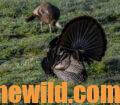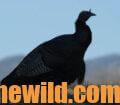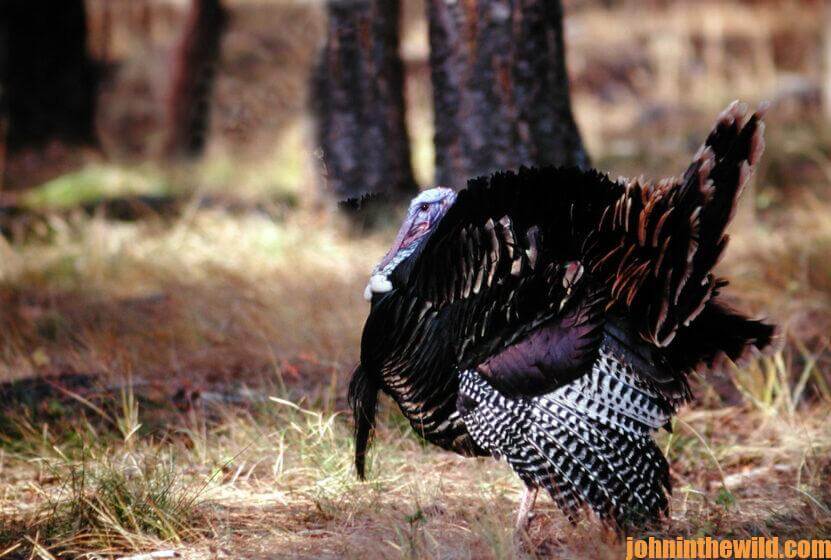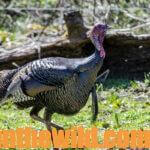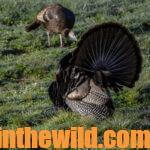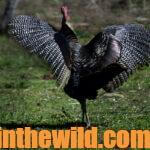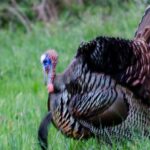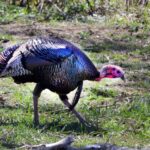Editor’s Note: Hunters who consistently bag turkeys each season and have the greatest chances of success spend more time scouting and studying the birds than they do hunting them. You can take non-gobbling turkeys
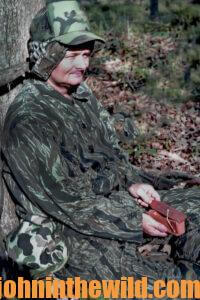 On a hunt for Rio Grande gobblers on the Harrison Ranches in Texas, Allen Jenkins, the then president of the M.L. Lynch Company, and I hunted turkeys from daylight until 10:00 am, one day. Although we talked to plenty of gobblers, none of them responded by moving to where we were. At 10:00 am in the blistering-hot deserts of Texas, a dark-colored Rio Grande bird needs shade and water. So, Jenkins and I went to a small pond to see if we could find some turkeys. A few birds were at the stock tank. After waiting until they meandered off, we searched for a place to set-up to try calling a tom. However, the grass was so short, and the turkeys could see so well that the only possible blind site was an old, abandoned calf feeder. Jenkins and I climbed into the feeder, piled brush up in front of us and began to call.
On a hunt for Rio Grande gobblers on the Harrison Ranches in Texas, Allen Jenkins, the then president of the M.L. Lynch Company, and I hunted turkeys from daylight until 10:00 am, one day. Although we talked to plenty of gobblers, none of them responded by moving to where we were. At 10:00 am in the blistering-hot deserts of Texas, a dark-colored Rio Grande bird needs shade and water. So, Jenkins and I went to a small pond to see if we could find some turkeys. A few birds were at the stock tank. After waiting until they meandered off, we searched for a place to set-up to try calling a tom. However, the grass was so short, and the turkeys could see so well that the only possible blind site was an old, abandoned calf feeder. Jenkins and I climbed into the feeder, piled brush up in front of us and began to call.
 Within 30 minutes, we heard hens clucking and yelping but never heard a gobbler. We observed about 25 hens wandering by the right side of the calf feeder and just past Jenkins. Finally I spotted a big gobbler about 40 yards from where we were sitting with his tail spread and his beard nearly dragging the ground. “I see him, Allen,” I informed Jenkins. “I’m going to take the shot.” “No, not yet, John,” Allen whispered. “He’s too far away.” I’m not the best judge of distance. But I know how far 40 yards is, and this bird was well within that distance. However, Jenkins was my host on this hunt. If he didn’t want me to shoot, I wouldn’t. The gobbler broke strut and moved to within 20 yards of where I was impatiently holding my gun.
Within 30 minutes, we heard hens clucking and yelping but never heard a gobbler. We observed about 25 hens wandering by the right side of the calf feeder and just past Jenkins. Finally I spotted a big gobbler about 40 yards from where we were sitting with his tail spread and his beard nearly dragging the ground. “I see him, Allen,” I informed Jenkins. “I’m going to take the shot.” “No, not yet, John,” Allen whispered. “He’s too far away.” I’m not the best judge of distance. But I know how far 40 yards is, and this bird was well within that distance. However, Jenkins was my host on this hunt. If he didn’t want me to shoot, I wouldn’t. The gobbler broke strut and moved to within 20 yards of where I was impatiently holding my gun.
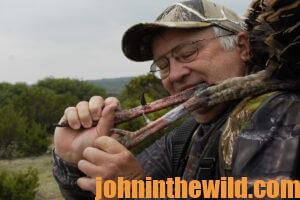 “I’m going to shoot that gobbler, Allen,” I said. “Don’t shoot yet,” Jenkins insisted. “I’ll tell you when to shoot. The bird’s too far.” Finally the bird moved within 15 yards of the calf feeder. I whispered, “Allen, if I don’t shoot him now, he’s going to walk off.” “Not yet, John,” Jenkins said emphatically. “The tom’s still too far away. I’ll tell you when to shoot. Don’t shoot until I give the word.”
“I’m going to shoot that gobbler, Allen,” I said. “Don’t shoot yet,” Jenkins insisted. “I’ll tell you when to shoot. The bird’s too far.” Finally the bird moved within 15 yards of the calf feeder. I whispered, “Allen, if I don’t shoot him now, he’s going to walk off.” “Not yet, John,” Jenkins said emphatically. “The tom’s still too far away. I’ll tell you when to shoot. Don’t shoot until I give the word.”
As I watched, the big proud Rio Grande gobbler walked off. I decided Jenkins had been in the sun too long and probably had lost his mind. But in about five minutes, I saw another gobbler that was completely surrounded by hens displaying for all he was worth. The bird was at about 35 yards when Jenkins said, “Take him, John.” Instantly I realized that Jenkins hadn’t seen the first gobbler. I whispered to Allen, “I can’t shoot without hitting a hen.” “Well, wait for a clear shot,” Jenkins instructed. The hens filtered in around the calf feeder as the gobbler drew closer. One of the hens saw me move my gun barrel to continue to aim at the gobbler’s head. She putted, the hens around the gobbler squatted, and the old bird stuck his head straight up. My Browning 3 inch Magnum reported, the turkey flopped, and the hunt was over. Again, knowing where the turkeys wanted to be enabled us to bag a gobbler that never answered our calls.
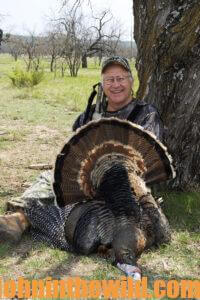 Two ingredients are required for successful turkey hunting – hunting and calling. The hunter who learns how to hunt turkeys will find out where the birds live, roost, strut, feed, water, dust and travel consistently can bag a gobbler whether the turkeys call or don’t call. The hunter who relies solely on his calling and is dependent on toms to gobble to give away their locations will spend many fruitless mornings in the woods.
Two ingredients are required for successful turkey hunting – hunting and calling. The hunter who learns how to hunt turkeys will find out where the birds live, roost, strut, feed, water, dust and travel consistently can bag a gobbler whether the turkeys call or don’t call. The hunter who relies solely on his calling and is dependent on toms to gobble to give away their locations will spend many fruitless mornings in the woods.
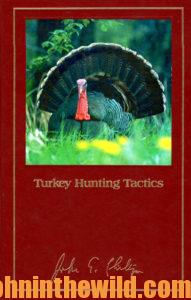 To learn more about hunting turkeys successfully, visit John E. Phillips’ Amazon book page at https://www.amazon.com/John-E.-Phillips/e/B001HP7K6O. For even more information from many of the top turkey hunters and callers, go to the book, “Turkey Hunting Tactics,” https://www.amazon.com/gp/product/B007PK9B2G/ref=dbs_a_def_rwt_hsch_vapi_taft_p2_i3,
To learn more about hunting turkeys successfully, visit John E. Phillips’ Amazon book page at https://www.amazon.com/John-E.-Phillips/e/B001HP7K6O. For even more information from many of the top turkey hunters and callers, go to the book, “Turkey Hunting Tactics,” https://www.amazon.com/gp/product/B007PK9B2G/ref=dbs_a_def_rwt_hsch_vapi_taft_p2_i3,
available in Kindle, print and Audible. You may have to copy and paste this link into your browser. (When you click on the book, notice on the left where Amazon says you can read and hear 10% of the book for free). On the right side of the page and below the offer for a free Audible trial, you can click on Buy the Audible book.
Tomorrow: Listen to David Hale – Don’t Call Turkeys

